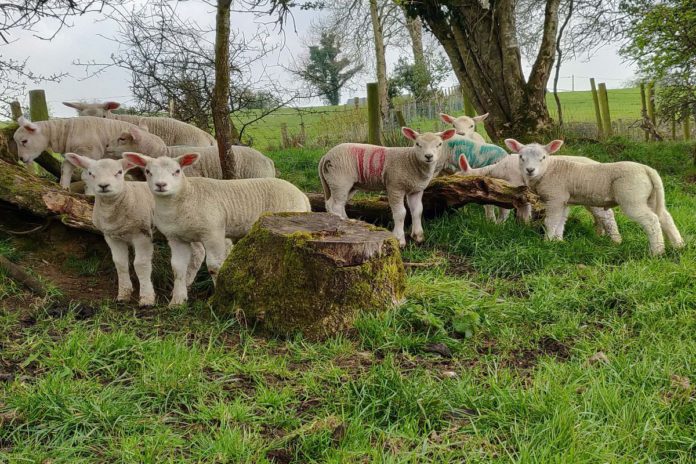With many flocks now scanning well over 200%, it’s inevitable that many ewes will produce triplets, according to Gareth Beacom, CAFRE Beef & Sheep Adviser, Enniskillen.
Selling as pets
This is probably the simplest option, particularly at the start of the lambing season. Farmers are reporting prices from £25 – £35 and even higher for stronger lambs. However, as the spring progresses, surplus pet lambs become more plentiful.
Selling as pets also reduces labour requirements at an already busy and often stressful time for farmers.
Keeping triplets on the ewe
Another option is to keep lambs on the ewe. Studies have shown that ewes are capable of rearing three lambs if suitably fed. However, if this is to be successful ewes need to be in a good body condition score and lambs ideally need to be evenly sized.
These ewes will need to be offered concentrate for 4 – 6 weeks post-lambing along with high-quality grazing.
Creep feed will also need to be offered to lambs; this system requires a high level of management. Mastitis, in particular, is often cited as one of the main reasons for farmers avoiding this option.
Artificially rearing pets on a feeder
This is becoming a more popular option. Whilst pet lambs require a high level of management, this system simplifies the management of the main sheep flock.
The two main options farmers are opting for in this system are ab-lib milk feeders where fresh milk is added daily or automated feeders which mix the milk and self-clean.
The ab-libfeeders typically cost from £200 – £300 and are traditionally the more popular option. However, milk needs to be added and feeders cleaned daily – adding another chore at a busy time of year.
Fully automated feeders are more expensive with reported prices from £3,000 – £3,500.
Economics of rearing pet lambs
The economics of rearing pet lambs can vary depending on system, however, where well managed with disease and mortality are kept to a minimum a positive margin can be generated.
Detailed below are some typical costings.
Milk replacer cost
- 1 Litre/day for weeks 1-2 & 1.5 litres for weeks 3-4 = 35 litres (7Kg of milk replacer)
- Total milk cost @ 50p/litre (£12.50/5kg) = £17.50
Meal Cost
- 3-6 weeks @ 0.5kg/day = 10.5kilos
- 6 weeks – 4.5 months @ 1.2kg/day = 109kilos
Assuming most of this meal is bought in small bags at a price of £300/t (£7.50/25kg bag), this brings the total meal cost to approximately £36, leaving a total feed cost of £53.50 per lamb.
With some miscellaneous costs accounted for (straw, vaccines and doses – roughly £5/lamb) a total variable cost of £58.50 should be achievable.
Whilst feed costs are high in this system, daily liveweight gains can also be high. These lambs can typically achieve a carcass weight of 20-21 kilos by 120 days of age; this means some pet lambs should be ready in the first lamb draft before the normal annual price drop.
With a lamb price of £4.00 per kilo (£80-£85 / lamb), this leaves a potential breakeven price for pets of £20.00-£25.00
Summary
Irrespective of what system is employed the success of each will be determined by ensuring healthy viable lambs are born.
Achieving optimum pre-lambing nutrition for triplet bearing ewes will optimise lamb size and help reduce lamb mortality.





